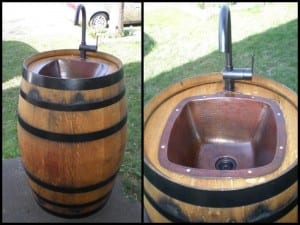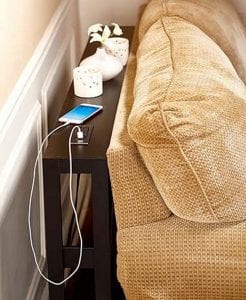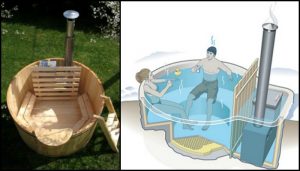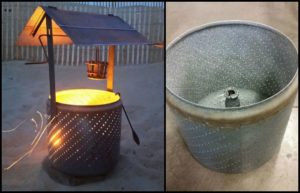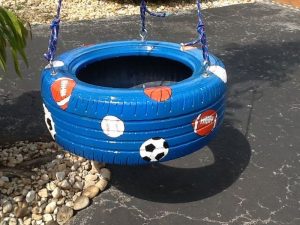Last Updated on February 13, 2024 by teamobn
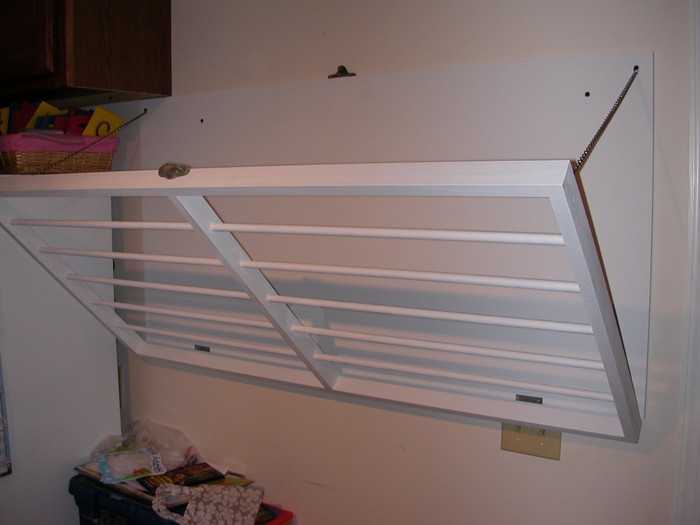
Not enough space for drying all the laundry? It’s frustrating when you do the laundry and there’s not enough space for drying them. This can often be the case in smaller homes or apartments. One solution is to invest in a clothesline or drying rack.
Then make a DIY wall-mounted drying rack! This will give you a dedicated space for drying your clothes and can help prevent them from getting wrinkled.
Some clothes are not meant to be put in the dryer and it’s not always convenient to hang them outside! Sure there are lots of drying racks available. But they take up floor space and need a home when not being used! A wall-mounted drying rack is a much nicer solution 
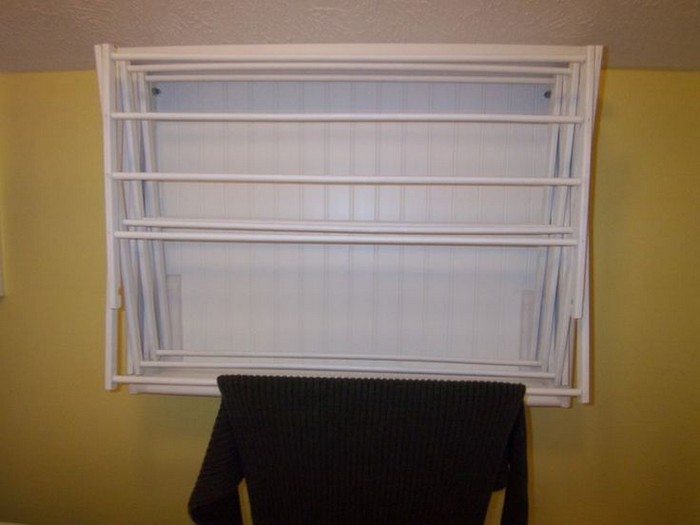
You can buy new materials for this project but a much cheaper and simpler solution is to upcycle a playpen or crib! One way to save money on your next home improvement project is to upcycle existing materials, like an old playpen or crib.
With a little bit of creativity, you can transform these items into something new and unique. Not to mention, it’s a great way to be eco-friendly and recycle materials that would otherwise end up in a landfill. It’s an easy and inexpensive solution you can accomplish easily over the weekend.
Repurposing materials for DIY projects allows you to unleash your creativity and ingenuity. Instead of seeing items as disposable or outdated, you can envision new and inventive ways to give them a second life. Whether you’re transforming old wooden pallets into a rustic coffee table or upcycling mason jars into stylish organizers, the possibilities are endless. By tapping into your creative spirit, you can turn everyday objects into something new and unique that reflects your style and vision.
Repurposing materials is a sustainable and eco-friendly practice that helps reduce waste and conserve resources. Rather than discarding items into a landfill where they contribute to environmental pollution, repurposing allows you to extend their lifespan and minimize their environmental impact.
By giving new purpose to old materials, you reduce the demand for new resources and help mitigate the ecological footprint associated with manufacturing and disposal. Additionally, repurposing can inspire others to adopt more sustainable habits and contribute to a culture of environmental stewardship.
By embracing the principles of sustainability and resourcefulness, you can turn discarded materials into functional and beautiful creations that enhance your home and reflect your style. So why not roll up your sleeves, unleash your creativity, and embark on a weekend DIY adventure?
Do you need this wall-mounted drying rack in your laundry area?
Click on any image to start the lightbox display. Use your Esc key to close the lightbox.![]()
You’ll need these materials:
- 2 x 2’ Precut Birch (1/2 inch thick)
- 2 pcs 1/2 x 2” Poplar Boards
- 4 – 6 pcs 3/8” Dowel Rods (48” long)
- Sash Lock
- Narrow Loose Pin Hinges (set of two)
- D Ring Hangers (for mounting on the wall)
- Bracketed Hinge for side (or chain with small screw eyes)
- 3 pcs White Porcelain Knobs
- Primer and Paint of choice
- Wood Filler
And these tools:
- Drill
- Paintbrush
- Saw
- Mallet
- Hammer
Steps:
To begin, you will need a frame that will serve as support for your drying rack. For this wall-mounted drying rack project, we will be using a 2 x 2′ Precut Birch (1/2 inch thick). You will need to attach this piece to the wall later on in the project.
Now that you have your dowel and your 1/2 x 2” Poplar Boards, it’s time to attach them. To do this, you’ll need to drill holes in each of the Poplar Boards, using a drill bit that is the same diameter as the dowel. Once you have your holes drilled, simply insert the dowel into the holes and voila! You should now have a sturdy, professional-looking drying rack.
Then, we have to connect the drying rack to the frame together. To do this, we will use narrow loose pin hinges (set of two) on one side of your dry rack and frame. You can use nails to attach the hinges but screws are better. Make sure the screws are long enough to go through the drying rack, the frame, and into the wall studs. Once the screws are in place, you can open and close the drying rack as needed.
To ensure your wall-mounted drying rack doesn’t drop down and break when opened, you’ll need to attach bracketed hinges on both sides of the drying rack and the wall. The rack should be able to open at an angle of 30 to 90 degrees from the frame, which will provide adequate support and stability. Other than bracketed hinges, you can also use chains with small screw eyes for this process.
We now have the complete wall-mounted drying rack. To attach them to the wall, use the appropriate screws and wall plugs for the chosen location. You can also opt to paint the rack to blend into your walls before attaching them to the wall.
Well, as easy as that! Would you also like to have a wall-mounted drying rack added to your laundry room?
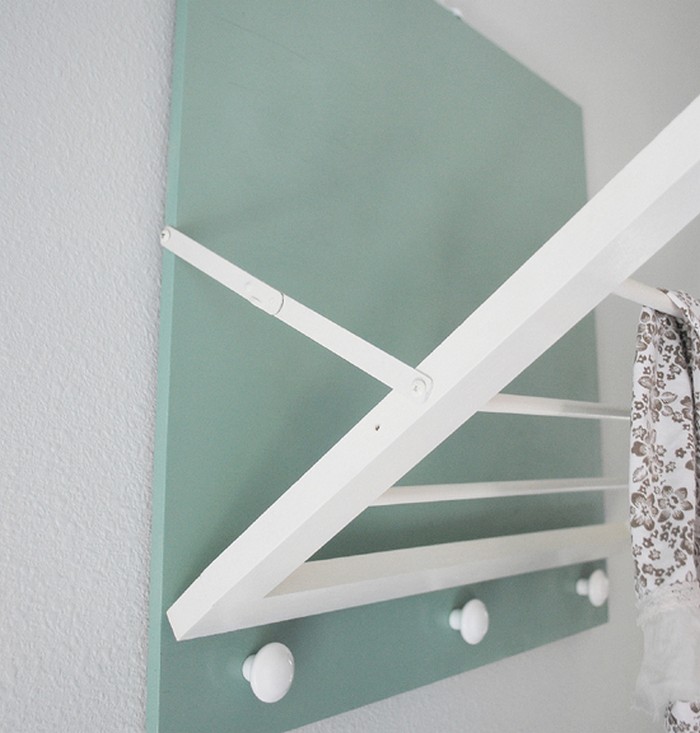
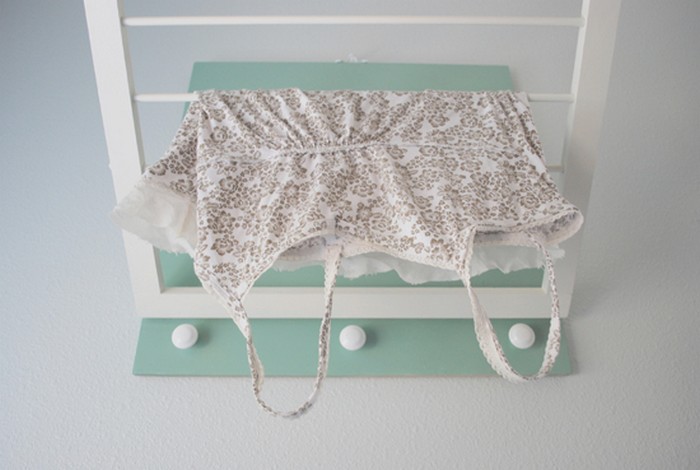
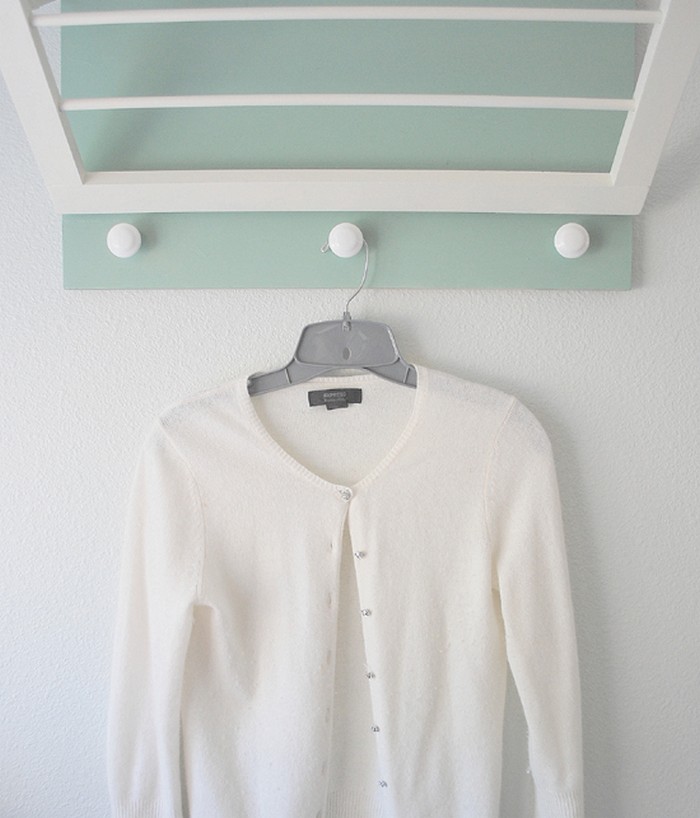

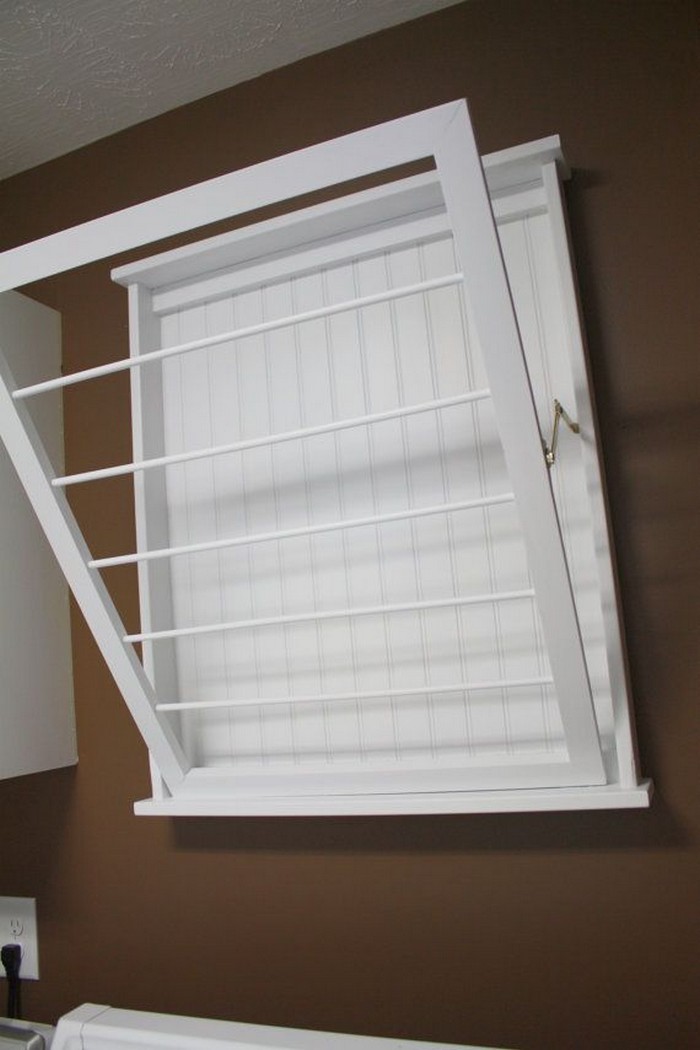
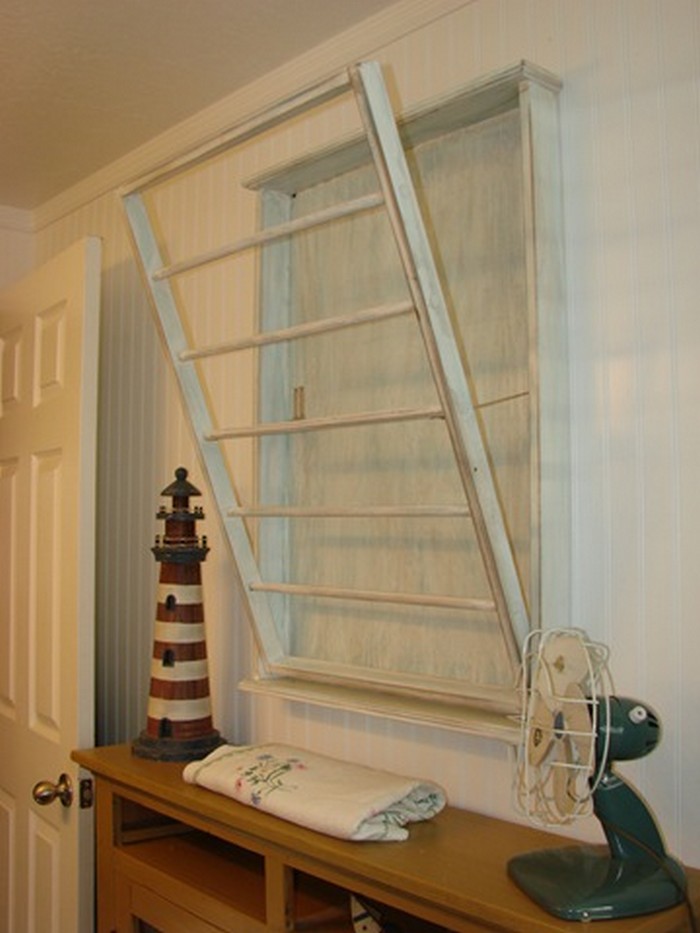
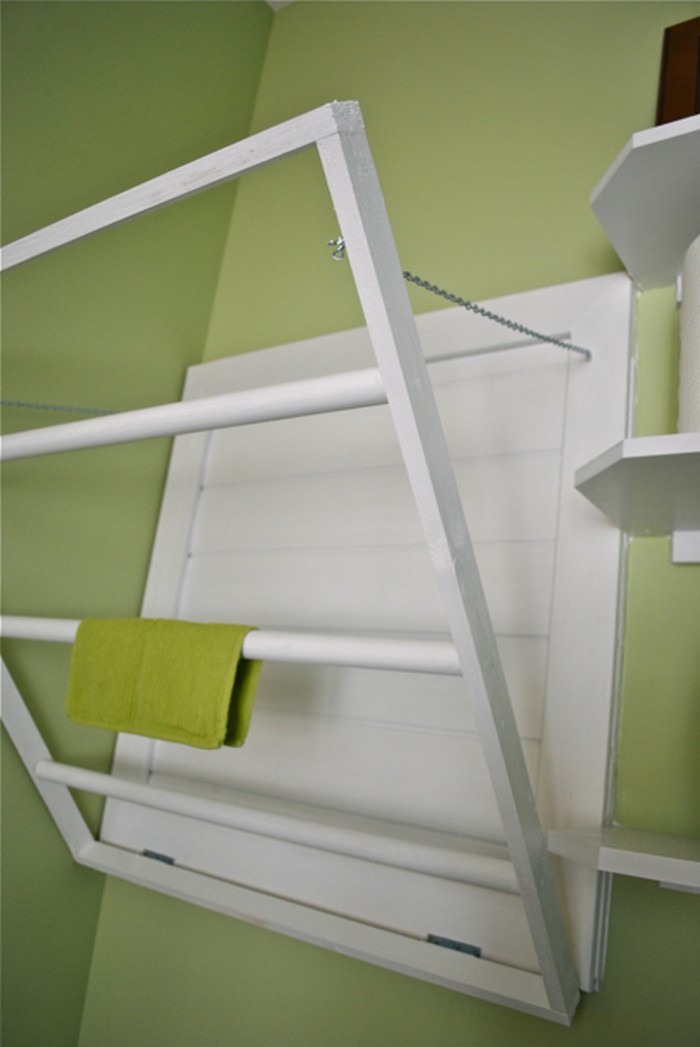
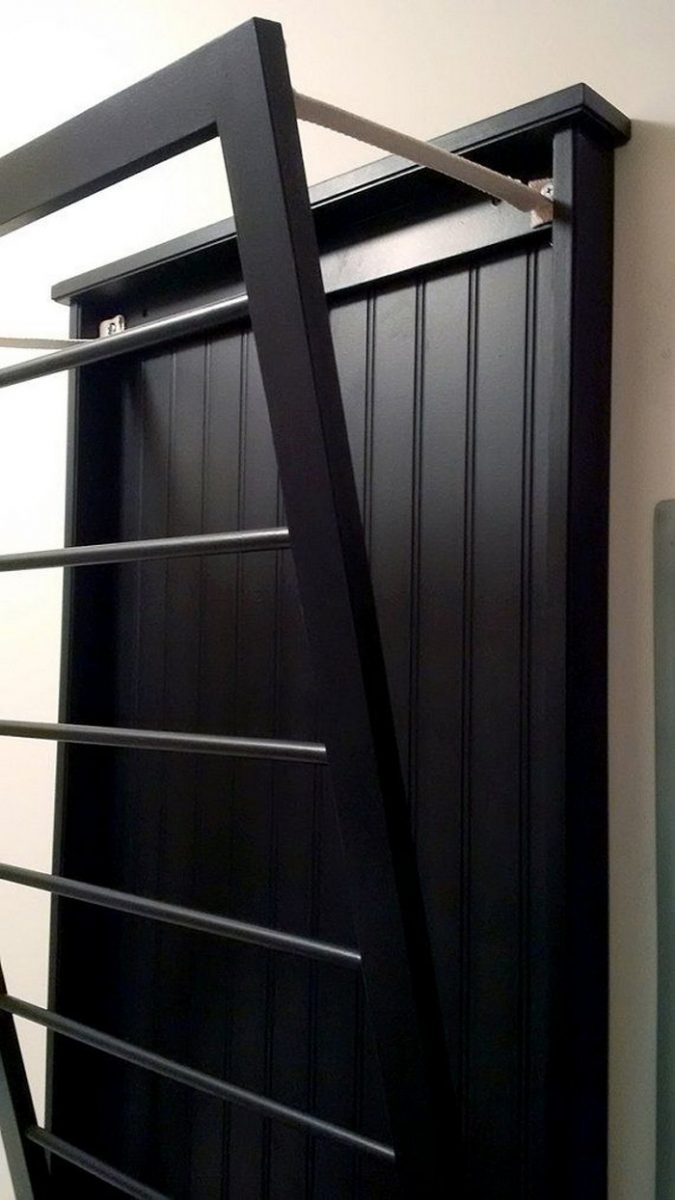


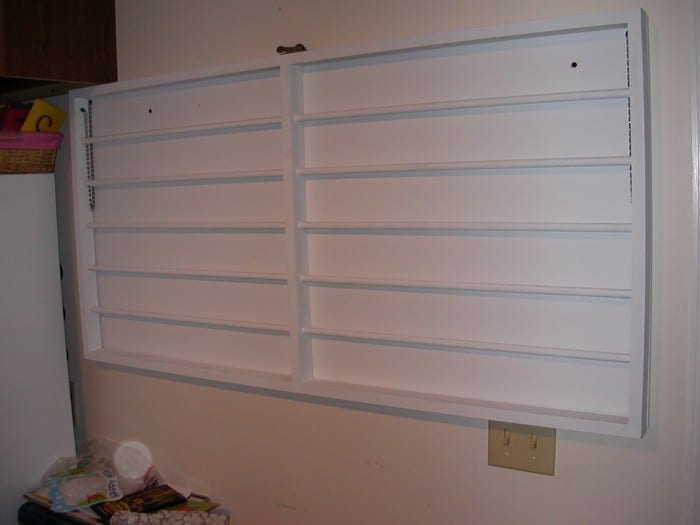

Thanks to Centsational Girl for this great project. You can get step-by-step instructions here…
Advantages of Wall-Mounted Drying Rack
Wall-mounted drying racks utilize vertical space, which is often underutilized in homes. This can be especially beneficial in small apartments or laundry rooms with limited floor space. But other than space optimization, wall-mounted drying rack offers the following advantages:
1. Convenience
By keeping the drying rack elevated and securely attached to the wall, you eliminate the need to navigate around a bulky obstacle on the floor. This not only reduces the risk of accidental collisions but also makes it easier to move freely within the space. You can walk from one end of the room to the other without having to detour around a cumbersome drying rack, making your laundry routine smoother and more efficient.
Additionally, having the drying rack on the wall enhances the overall aesthetics of the space. It creates a clean and organized look, free from clutter and unnecessary obstructions. Your laundry area becomes a more pleasant and inviting environment, conducive to productivity and relaxation.
2. Improved Air Circulation
This unimpeded airflow serves multiple purposes, the foremost being the efficient evaporation of moisture from your clothes. As air circulates each item, it absorbs moisture from the fabric’s surface, carrying it away and replacing it with drier air. This continuous exchange of moist and dry air accelerates the drying process, significantly reducing the time required for clothes to reach the desired level of dryness.
The open design of wall-mounted racks promotes more even drying throughout your laundry load. Unlike traditional methods where clothes may clump together or overlap, hindering airflow and creating uneven drying conditions, wall-mounted racks provide ample space for each garment to hang freely. This ensures that air circulates evenly around every item, preventing damp spots and ensuring uniform drying results.
In addition to expediting drying times, improved air circulation also contributes to the overall freshness and cleanliness of your laundry. By allowing moisture to evaporate quickly and efficiently, wall-mounted racks help inhibit the growth of mould, mildew, and bacteria that thrive in damp environments. This not only prevents musty odours but also helps maintain the integrity of your clothes, prolonging their lifespan and ensuring they emerge from the drying process smelling clean and fresh.
The enhanced airflow provided by wall-mounted racks can translate into energy savings. By reducing reliance on electric dryers or other energy-intensive drying methods, you can lower your household’s energy consumption and utility bills. This eco-friendly approach not only benefits your finances but also supports sustainability efforts by reducing carbon emissions associated with energy production.
3. Customizable Design
When you opt to build your wall-mounted drying rack, you’re opening the door to a world of customization possibilities tailored precisely to your needs and space constraints. Unlike store-bought racks that come in standard sizes and configurations, a DIY approach empowers you to design a drying solution that perfectly fits your unique requirements and preferences.
One of the most significant advantages of customizing your wall-mounted drying rack is the ability to adjust its size to match the available space in your home. Whether you have a spacious laundry room or a compact apartment, you can tailor the dimensions of the rack to maximize efficiency and optimize functionality. By carefully measuring the available wall space and considering your laundry needs, you can create a drying rack that seamlessly integrates into your environment without overwhelming the room.
Customization extends beyond mere size adjustments—you have the freedom to design the rack according to your specific organizational needs. For instance, if you frequently dry a variety of garments, you can incorporate multiple shelves or tiers to accommodate different clothing types and sizes. This ensures that you have ample space to hang everything from delicate lingerie to bulky towels without overcrowding the rack or compromising airflow.
You can enhance the functionality of your wall-mounted drying rack by incorporating additional features such as hooks or pegs for hanging smaller items like socks, underwear, or accessories. These thoughtful additions not only maximize space utilization but also improve organization and accessibility, making it easier to air-dry a wide range of clothing and household items.
Additionally, customization offers the opportunity to personalize the aesthetics of your drying rack to complement your home decor. Whether you prefer a rustic farmhouse look, a sleek modern design, or something in between, you can choose the materials, finishes, and decorative elements that align with your style preferences. This allows you to create a drying rack that not only serves a practical purpose but also enhances the overall ambience of your space.
4. Cost-Effectiveness
Undertaking a do-it-yourself (DIY) project to build a wall-mounted drying rack offers significant cost advantages over purchasing pre-made solutions. By leveraging readily available materials and investing your own time and effort, you can create a functional and customized drying rack at a fraction of the cost of store-bought options.
One of the primary cost-saving benefits of DIY projects is the ability to utilize materials you already have on hand. Many common household items, such as spare wood boards, dowel rods, screws, and other hardware, can be repurposed for building a drying rack, minimizing the need for costly purchases. This not only reduces the overall expenditure but also contributes to sustainability efforts by repurposing existing resources.
If you need to purchase materials for your DIY drying rack, the cost is often significantly lower than buying a pre-made solution. By shopping strategically and selecting affordable supplies from hardware stores or online retailers, you can keep expenses to a minimum without sacrificing quality or functionality. Additionally, you have the flexibility to choose materials that align with your budget and preferences, allowing you to create a drying rack that meets your needs without breaking the bank.
Another cost-saving advantage of DIY projects is the ability to customize the design to optimize material usage and minimize waste. By carefully planning the dimensions and layout of your drying rack, you can maximize efficiency and minimize excess materials, reducing overall costs. Additionally, DIY projects often allow for greater flexibility in design, enabling you to tailor the rack to your specific space requirements and functional preferences without incurring additional expenses.
DIY projects offer the opportunity to save on labour costs by utilizing your skills and expertise to build the drying rack. Rather than paying for the assembly and installation of a pre-made solution, you can invest your time and effort into the project, further reducing the overall cost. This hands-on approach not only saves money but also provides a sense of accomplishment and satisfaction in creating something functional and unique with your own two hands.
The Wrap Up
In conclusion, building a space-saving wall-mounted drying rack for your laundry is a practical and rewarding DIY project that offers numerous benefits. By following five easy steps, you can create a customized drying solution that optimizes space utilization, enhances convenience, promotes improved air circulation, provides customizable design options, and offers cost-effectiveness.
First, gather the necessary materials and tools, ensuring you have everything you need to complete the project. Next, plan the design and dimensions of your drying rack to fit your specific space requirements and functional needs. Then, proceed to measure, cut, and assemble the wooden frame, ensuring it is sturdy and well-constructed.
Once the frame is assembled, install dowel rods or other hanging mechanisms to accommodate your laundry items. Finally, mount the drying rack securely to the wall, making sure it is level and properly anchored for stability. Optionally, you can add finishing touches such as sanding, painting, or staining to enhance the appearance and durability of the rack.
In summary, building a wall-mounted drying rack for your laundry offers a space-saving, convenient, and customizable solution for air-drying clothes. By investing your time and creativity into this DIY project, you can enjoy the benefits of a functional and efficient drying solution tailored to your specific needs and preferences. So, roll up your sleeves, gather your materials, and embark on the journey to create your own space-saving wall-mounted drying rack today!
Frequently Asked Questions
1. What materials do I need to build a wall-mounted drying rack?
The materials typically include wood boards, dowel rods, screws, wall anchors (if necessary), paint or stain (optional), and basic tools such as a saw, drill, screwdriver, measuring tape, pencil, and level.
2. How much weight can a wall-mounted drying rack support?
The weight capacity of the drying rack depends on factors such as the materials used and how securely it is mounted to the wall. It’s essential to use sturdy materials and proper mounting techniques to ensure sufficient support for your laundry items.
3. Can I customize the size and design of the wall-mounted drying rack?
Yes, one of the advantages of building your drying rack is the ability to customize it to fit your specific space requirements and preferences. You can adjust the size, and number of shelves, and even add features like hooks for hanging smaller items.
Whether you’re adjusting the size, adding shelves and hooks, or incorporating custom features, DIY empowers you to design a drying rack that not only enhances the efficiency of your laundry routine but also adds functionality and style to your home.
4. How difficult is it to mount a wall-mounted drying rack?
Mounting the rack to the wall is relatively straightforward, but it may require basic DIY skills. Follow the step-by-step instructions carefully, use a level to ensure it’s straight, and make sure to properly anchor it to the wall for stability.
5. Can you install a wall-mounted drying rack in a rental property?
It depends on the landlord’s policies and the type of mounting required. If you’re not allowed to drill holes in the wall, you can explore alternative mounting methods such as adhesive hooks or removable adhesive strips.
6. What’s the benefit of using a wall-mounted drying rack instead of a freestanding one?
Wall-mounted racks save floor space, making them ideal for smaller laundry rooms or apartments. They also keep the drying rack out of the way when not in use, reducing clutter and the risk of bumping into it.
7. How long does it take to build and install a wall-mounted drying rack?
The time required depends on factors such as your DIY skills, the complexity of the design, and the availability of materials and tools. In general, the process can typically be completed within a day or two.
8. Can you use the wall-mounted drying rack for items other than laundry?
Yes, you can use the wall-mounted drying rack for a variety of purposes, such as drying towels, linens, delicates, and even herbs or flowers. Just make sure to adjust the design and configuration as needed to accommodate different items.

